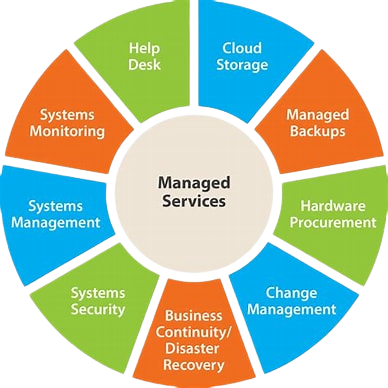MANAGED SERVICES
Managed IT services provider (MSP) is most often information technology (IT) services provider that manages and assumes responsibility for providing a defined set of services to its clients either proactively or as the MSP (not the client) determines that services are needed. Most MSPs bill an upfront setup or transition fee and an ongoing flat or near-fixed monthly fee, which benefits clients by providing them with predictable IT support costs.
An application service provider (ASP) is a business providing
computer-based services to customers over a network; such as
access to a particular software application (such as customer
relationship management) using a standard protocol
(such as HTTP).


Sometimes, MSPs act as facilitators who manage and procure staffing services on behalf of the client. In such context, they use an online application called vendor management system (VMS) for transparency and efficiency. A managed service provider is also useful in creating disaster recovery plans, similar to a corporation’s. Managed Service Providers tend to prove most useful to small businesses with a limited IT budget
The need for ASPs has evolved from the increasing costs of specialized software that have far exceeded the price range of small to medium-sized businesses. As well, the growing complexities of software have led to huge costs in distributing the software to end-users. Through ASPs, the complexities and costs of such software can be cut down. In addition, the issues of upgrading have been eliminated from the end-firm by placing the onus on the ASP to maintain up-to-date services, 24 x 7 technical support, physical and electronic security and in-built support for business continuity and flexible working.
- Software integration issues are eliminated from the client site
- Software costs for the application are spread over a number of clients
- Vendors can build more application experience than the in-house staff
- Low-code development platforms permit limited customization of pre-built applications
- Key software systems are kept up to date, available, and managed for performance by experts
- Improved reliability, availability, scalability and security of internal IT systems
- A provider’s service level agreement guarantees a certain level of service
- Access to product and technology experts dedicated to available products
- Reduction of internal IT costs to a predictable monthly fee
- Redeploying IT staff and tools to focus on strategic technology projects that impact the enterprise’s bottom line
